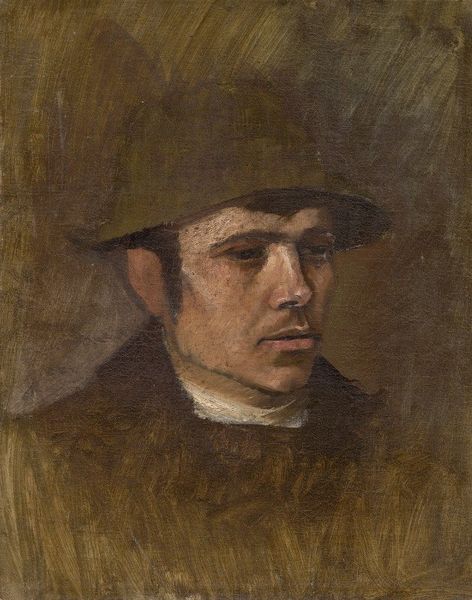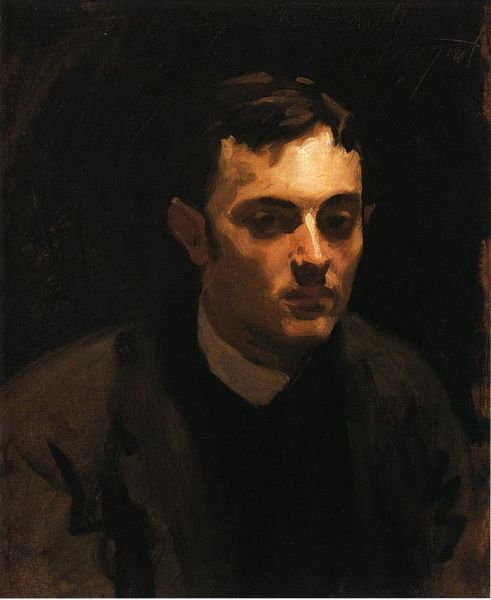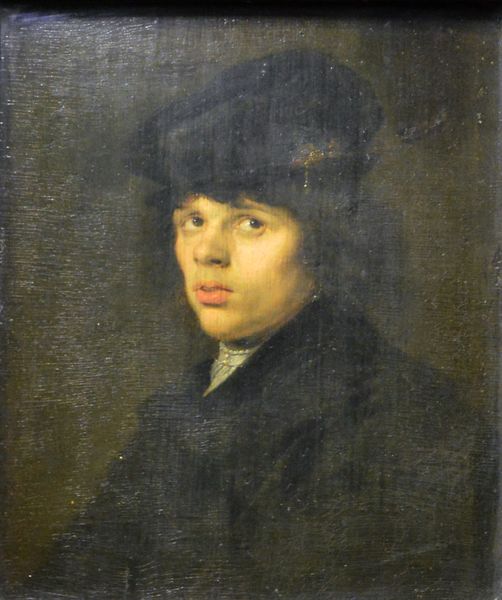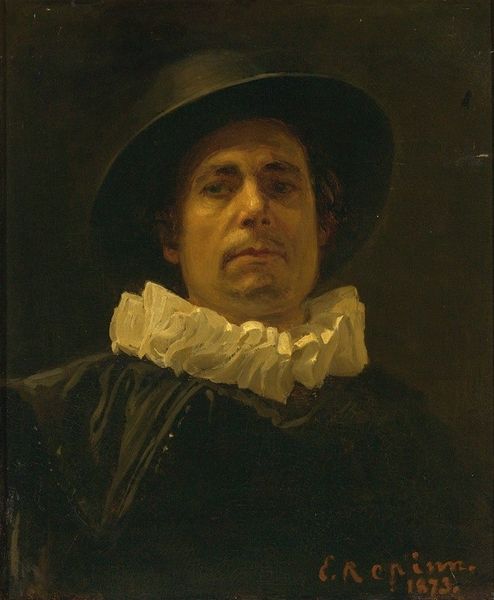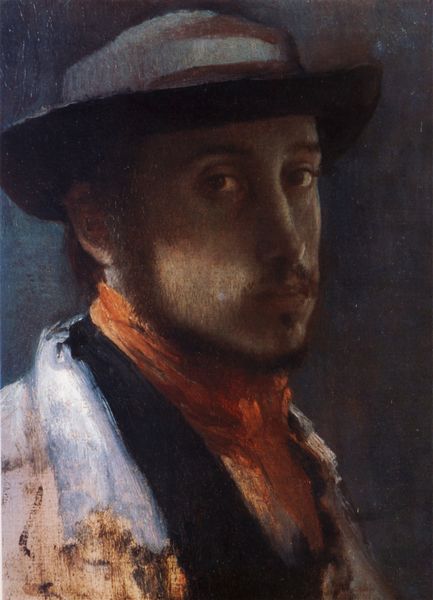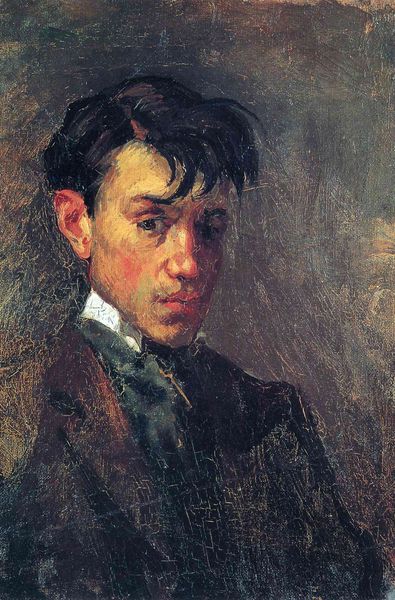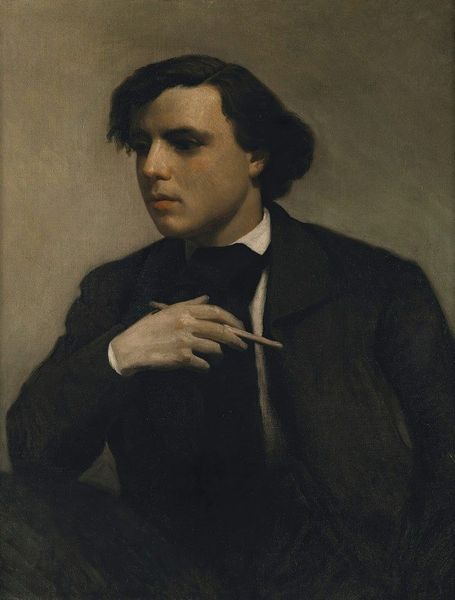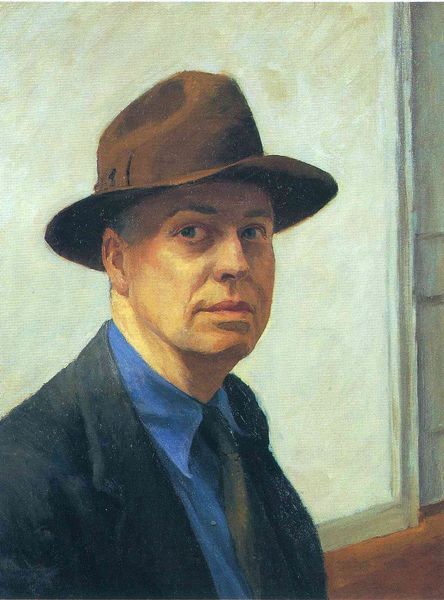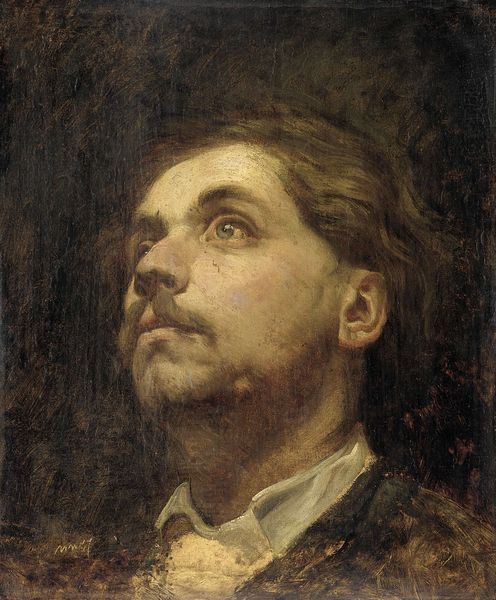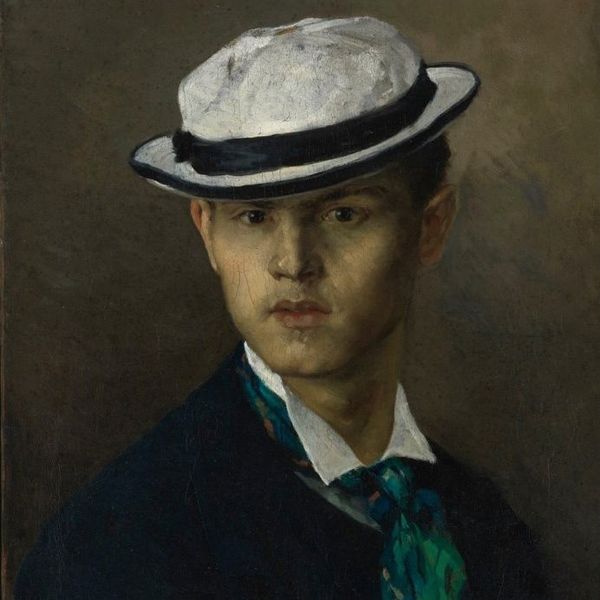
painting, oil-paint
#
portrait
#
self-portrait
#
portrait
#
painting
#
oil-paint
#
modernism
#
realism
Copyright: Antonio Bueno,Fair Use
Editor: This is Antonio Bueno's "Self-Portrait" from 1940, created with oil paint. There's a very direct gaze, almost challenging. What catches your eye when you look at this work? Curator: It's fascinating how the hat, such a seemingly simple element, carries a world of symbolism. Consider its function – to conceal, to shade. Yet here, it casts the face into dramatic light, drawing attention precisely to what it covers. Editor: That's interesting. So, it’s not really about hiding? Curator: Perhaps it's more about framing. The hat becomes a halo of shadow. Think of the religious iconography where light emanates from a saint, but here, shadow defines the individual. The way he presents himself has very direct antecedents with Italian renaissance portraiture and paintings. Do you see the echo of Caravaggio in the intense chiaroscuro, where light and shadow battle for dominance? Editor: I can see that. It’s like the darkness accentuates his features. Almost like the figure is emerging from this shadowy world, inviting the viewer to wonder what will be left outside of that glimpse. Curator: Precisely. And the gaze—notice how it locks with yours. It doesn’t merely observe; it seems to demand acknowledgement, doesn’t it? In many ancient cultures the eyes are "windows to the soul" — could this be an invitation to reflect on ourselves? Editor: It definitely makes you think about what he wants you to see, and what he's intentionally keeping hidden. I hadn't considered the psychological depth before, or its link to older paintings. Curator: Art invites us to uncover such cultural and historical layers embedded in the symbols. Editor: Thanks! This has given me a new appreciation for how symbols work within a portrait. Curator: Absolutely, understanding art is an exciting journey!
Comments
No comments
Be the first to comment and join the conversation on the ultimate creative platform.


